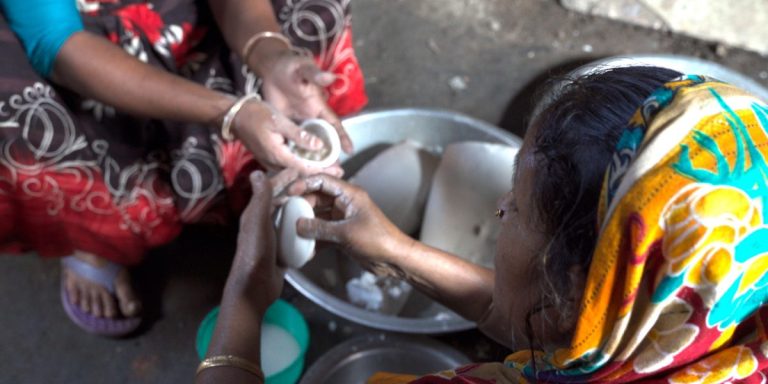India-Bangladesh Tensions: A Ground-Level Perspective on Media Narratives and Communal Harmony
In early December 2024, amidst escalating tensions between India and Bangladesh, two researchers, Raihana Ferdous, a Bangladeshi academic, and Meghna Gupta, an Indian filmmaker, embarked on a research trip to Chattogram, Bangladesh. News reports painted a grim picture of widespread unrest and violence against Hindus following the collapse of the Bangladeshi government. Indian media, in particular, amplified these reports, fueling anxieties and raising concerns about the researchers’ safety. Their shared research project, focused on the everyday lives of communities using collective kitchens, seemed precarious in the face of potential communal violence.
The backdrop to their journey was a tumultuous period in Bangladesh. Student protests had culminated in the downfall of Prime Minister Sheikh Hasina’s regime in August 2024, leading to significant loss of life. The ensuing chaos saw attacks on Hindu properties and places of worship, further exacerbating existing tensions. While these acts of violence were attributed to lawlessness and revenge against supporters of the former regime, some Indian media outlets portrayed a different narrative, blaming Islamist forces and fueling speculation about a massive influx of Hindu refugees into India. These sensationalized reports added to the existing confusion and distrust surrounding the situation.
Ferdous and Gupta, both based in the UK, were acutely aware of these narratives before their departure. Family members expressed concerns, and the researchers themselves seriously considered postponing the trip. However, fueled by their commitment to their research, they decided to proceed, meticulously refining their risk assessments and preparing for potential hostility. Their apprehension stemmed from the difficulty in discerning fact from fiction amidst the barrage of conflicting information emanating from various media sources.
Upon arriving in Chattogram, they were met with a surprising calm. The city, despite its history of political activism, showed little outward sign of unrest. Their research took them into informal settlements, predominantly Muslim communities with a few scattered Hindu families. Despite the sensitive context, Ferdous and Gupta were astonished that no one questioned their identities or backgrounds. The focus of interactions remained on the shared experience of daily life, the challenges of infrastructure, and the practicalities of cooking fuel.
This is not to say that differences and underlying prejudices were absent, but within the communities they engaged with, these concerns took a backseat to the shared human experience. The researchers’ identities were perceived not through the lens of religion or nationality but rather through a shared Bengali cultural heritage. Their status as "sisters who live abroad" became the primary identifier, facilitating connection and fostering a sense of shared experience. This reception, far removed from the polarized narratives dominating media discourse, underscored the complexity of on-the-ground realities.
While the researchers encountered a relative calm within their research setting, they also acknowledged underlying tensions. Conversations with Hindu friends revealed a palpable sense of unease and fear stemming from the recent violence. Similarly, supporters of the Awami League, predominantly Muslim, expressed anxieties about the future given their political affiliations. This nuanced reality highlighted the multi-layered nature of the situation, far removed from the simplistic narratives presented by media outlets.
Ferdous and Gupta’s experience underscores the importance of ground-level perspectives in understanding complex socio-political situations. The media’s tendency towards sensationalism and polarization can obscure the nuances of lived realities and exacerbate existing tensions. Their interactions within the communities of Chattogram revealed a capacity for coexistence and shared experience that defied the dominant narrative of communal strife. While acknowledging their privileged position and the limited scope of their research, the researchers’ experience offers a hopeful glimpse into the potential for harmony amidst adversity.
Their shared Bengali identity, transcending national and religious boundaries, facilitated connection and understanding. The focus on everyday life, the shared challenges and joys of cooking and community, created a space where differences faded into the background. This shared experience, underpinned by mutual respect and a commitment to understanding, provided a powerful counterpoint to the divisive rhetoric promoted by some media outlets.
The researchers’ collaboration, both professionally and personally, stands as a testament to the enduring strength of cross-border ties and the potential for shared cultural identity to bridge divides. Despite the strained political relationship between India and Bangladesh, their on-the-ground experience revealed a different story, one where shared heritage and human connection could overcome the narratives of division. Their research, focusing on the everyday lives of communities, highlighted the importance of shared spaces and collective activities in fostering coexistence and mutual understanding.
The collective kitchens they studied became symbols of this potential for harmony. These spaces, where resources and labor were shared, fostered a sense of community and mutual support. Disputes and disagreements inevitably arose, but the overarching dynamic was one of cooperation and shared responsibility. This lived experience, far removed from the sensationalism of news headlines, offered a powerful reminder of the human capacity for empathy and connection even in the face of adversity.
The researchers’ commitment to their work, despite the challenges and uncertainties, ultimately provided them with valuable insights into the complex dynamics of the region. Their experience serves as a cautionary tale about the dangers of relying solely on media narratives, particularly in times of heightened tension. It also offers a glimmer of hope, demonstrating the enduring power of human connection and the potential for shared identity to bridge divides.


